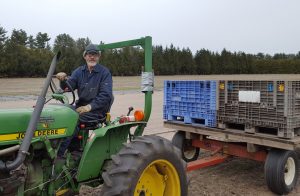The Reforestation Program has begun its annual tree seedling and shrub sales. The tree and shrub seedlings are available to all Wisconsin landowners interested in planting for conservation purposes such as forest products, wildlife habitat and erosion control. Information on seedling availability, species information, tips on how to prepare a site for tree planting and ordering instructions are available on the DNR website (dnr.wi.gov, keyword “tree planting”).
There is a minimum order of 1,000 tree seedlings, 500 wildlife shrubs or a mixed packet of 300 seedlings. Hardwood tree species available include native oak (bur, red, swamp white and white), maples (red, silver and sugar), shagbark hickory, black cherry, butternut, black walnut, river birch, aspen and hackberry. Conifer tree species available include white spruce, black spruce, white pine, tamarack, red pine, jack pine, hemlock and white cedar. Wildlife shrubs available include American plum, red osier and silky dogwood, hazelnut, juneberry and choke cherry. A current inventory of which species are available is maintained on the DNR website.
The orders will be distributed in April and early May and can be picked up at the state nurseries located in Boscobel, Hayward, or Wisconsin Rapids, or delivered to a central location designated by the local DNR forester. Even though seedlings are not shipped for planting until spring, it is important to order now because many species sell out quickly.
For assistance, contact Carey Skerven at carey.skerven@wisconsin.gov or (715) 424-3703.

